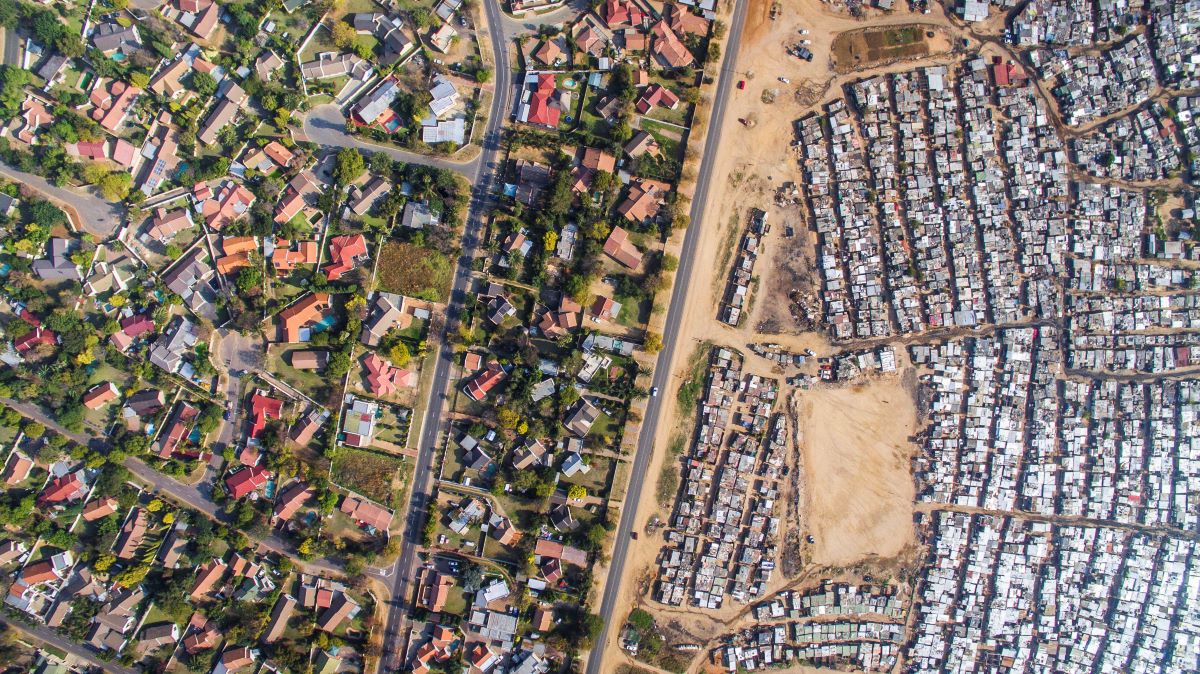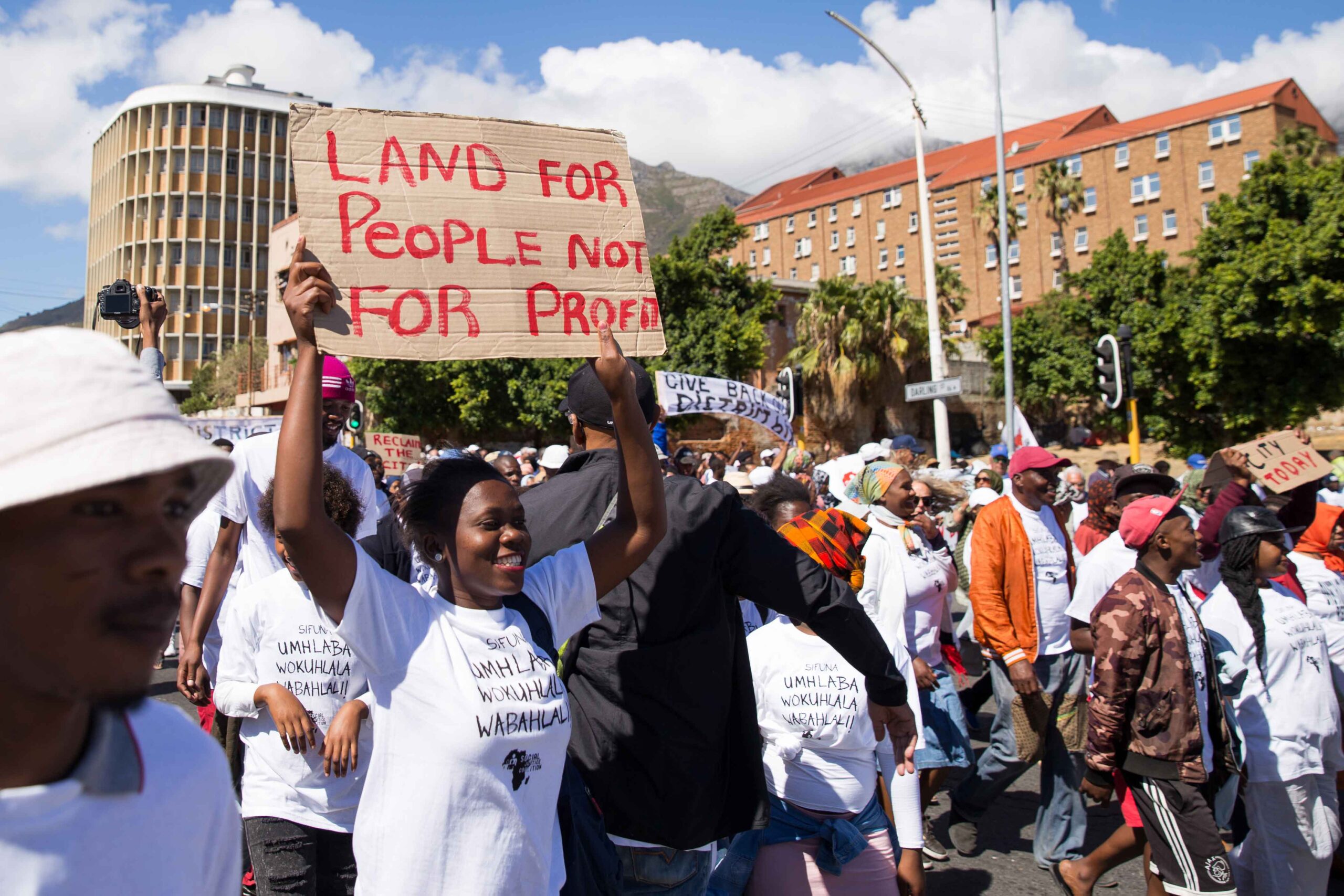Twenty-five years into democracy, equitable economic transformation remains elusive in South Africa. New modelling research, led by Dr Asghar Adelzadeh, Chief Economic Modeller at Applied Development Research Solutions, suggests that the government needs to shift its macroeconomic policy approach to make meaningful inroads into inequality, poverty and unemployment over the next decade. Andrea Teagle reports on a recent HSRC Macroeconomic Policy Dialogue ahead of the 2022 State of the Nation Address and Budget Speech in February.
A new macroeconomic simulation of South Africa’s economy forecasts that, if South Africa continues to follow a free-market macroeconomic policy framework, the unemployment rate in 2030 will be only slightly lower than today, 26.7%, and the poverty rate will remain at 33%, compared with 36.1% in 2019. This is a far cry from the National Development Plan goal to eliminate poverty and reduce inequality by 2030.
“The negative impact of post-apartheid economic policies on employment and poverty, and on both inequality and industrialisation, has been on display almost from the beginning and nothing has been done to change course,” said economist Dr Asghar Adelzadeh, Chief Economic Modeller at Applied Development Research Solutions (ADRS).
Adelzadeh was speaking at a recent HSRC Macroeconomic Policy Dialogue, where he presented the findings of a linked microeconomic-macroeconomic model. The model quantifies the likely outcome of three policy scenarios developed by Indlulamithi to explore whether social cohesion is attainable by 2030.
The macroeconomic model is a bottom-up, multisector, national and provincial simulation of South Africa’s economy, using Statistics South Africa (Stats SA) data from the past 25 years, Adelzadeh said. It captures the interactions between the national economy and the 3 provinces that make up the bulk of economic activity in SA: Gauteng, Western Cape and KwaZulu-Natal. The macro component is linked to a micro simulation of individuals and households.
ADRS has created 70 models for various countries. According to the discussant, Dr Pali Lehohla, former head of Stats SA, modelling of this nature has not been used in South Africa since 2008. The ANC government had been using ‘back of the envelope exercises’ to motivate its policy choices, he said, emphasising the value of modelling and measurement for robust debate.
“[T]he most pressing questions on everyone’s mind is ‘what will [the post-COVID-19] recovery look like and mean for South Africa?’” said Adelzadeh.

The six-pillar scenario
Under the business-as-usual scenario, South Africa only returns to its pre-COVID-19 state in four years’ time. Economic growth remains low at 2.2%.
However, the model forecasts that a different policy scenario, dubbed the six-pillar scenario, would shift South Africa’s macroeconomic trajectory.
In this scenario, economic growth increases to 6.2% per year – higher than the NDP goal of 5.4%. By 2030, the size of the economy close to doubles (from R3.15 trillion to R6.18 trillion), and the unemployment rate drops to 12%.
All of this requires significant changes to six policy pillars: in addition to micro- and macroeconomic policy reforms, it focuses on provincial policy, social policy, trade and industry policy and policy dealing with the private sector. In the six-pillar scenario, fiscal stimulus is used to target poverty directly, and to stimulate economic growth by increasing demand for goods and services. The primary goal of monetary policy is expanded to include growth – so that, in addition to controlling inflation, the Reserve Bank aims to achieve 6% GDP growth per year.
Part of the justification for the government’s current focus on supply-side policies is to address critical structural constraints to growth, like infrastructure bottlenecks in electricity and water, telecommunications, ports and railways. The six-pillar scenario aims to address infrastructure shortages by increasing public spending on social and economic infrastructure by 10% annually. To absorb unemployment, public works is introduced as an employer of last resort.
Critically, the scenario includes trade and industry policy reforms to grow the manufacturing sector, which has steadily contracted over the past 25 years. These include financing measures to attract local and foreign investment, programmes to boost inter-Africa trade (which currently accounts for only 15% of world trade) and localisation (for example, the Proudly SA campaign and the state favouring local suppliers of goods and services).
The scenario assumes that localisation policies will reduce dependency on imports; and that foreign investment will gradually increase, from 1% to 2.5% of GDP, among other assumptions.
The benefits of the expanded domestic economy are not limited to the highest income bracket, but is distributed across the socio-economic spectrum.
“The six-pillar policy alternative helps the poor families, because the national poverty rate declines by almost 50% to 23%,” Adelzadeh said, adding that there would be significant improvements in the delivery of public services, education and healthcare.
The austerity alternative
In the past two years, Treasury and the Reserve Bank have proposed policy measures that are consistent with a more conservative policy framework than the post– 1994 framework, according to Adelzadeh.
These proposals include supply-side policies (for example privatisation, labour market deregulation and lower tax rates); more austere fiscal policy (government spending cuts to reduce debt); and lowered inflation rate targets to create an investor-friendly environment.
In the model’s austerity scenario, the government cuts spending on goods and services by 10%, reduces capital spending by 5%, lowers the inflation target to 4%, and cuts subsidies on products and production by 5%. The model also assumes that the government abandons localisation policy.
Under this scenario, predicted annual GDP growth drops to 1.8% per year from the business-as-usual scenario’s 2.2%. After 10 years, the model predicts that unemployment will remain high, with 1 in 4 (26.7%) of South Africans without jobs. The financial sector will remain the main driver of economic growth, benefitting few and highly skilled workers, with relatively little ‘trickling down’ to the rest of the population.
What about debt?
The model’s forecasts suggest a policy framework similar to the six-pillar scenario is most likely to shift South Africa onto a more inclusive, pro-poor economic path. How would the government finance the increase in short-run debt needed to finance the expansion of public spending proposed by this scenario?
Adelzadeh argued that ways to finance public spending could be found with out-of-the-box thinking. For example, he said, “The Reserve Bank can come into play and buy government reserves with low charges.”
In a previous macroeconomic dialogue in this series, speakers agreed that critical to debt sustainability was how the government allocated its limited fiscal resources. Channelling spending into education and infrastructure stimulates future economic growth that exceeds the initial cost. In the six-pillar scenario, the debt-to-GDP ratio gradually declines, reaching 32% by 2030 – half that projected under the business-as-usual scenario (63%).
“In terms of debt sustainability, over the next 10 years, government revenue will grow concurrently with the projected GDP growth, thereby generating the funds needed to pay for the scenario’s increase in government expenditure,” said Adelzadeh.
Author: Andrea Teagle, a science writer in the HSRC’s Impact Centre
ateagle@hsrc.ac.za
Contact: Dr Peter Jacobs, a strategic lead in the Inclusive Economic Development (IED) division
pjacobs@hsrc.ac.za


